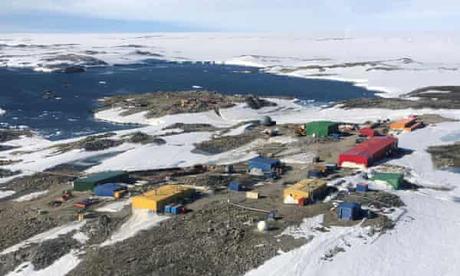
Antarctica Experiences a Heatwave
Antarctica has experienced its first recorded heatwave. The issue comes as the continent experienced its highest recorded temperature. The event has caused many impacts around the land. The issues include threats where the glaciers around the continent have broken apart.
The heatwave was recorded on the northern end of the continent's Bailey Peninsula along the Budd Coast. The temperatures were recorded in late January, which is part of the summer season in that area. The Australian Antarctic Program reviewed the data.
The readouts found an average temperature of 48.6 degrees Fahrenheit. Minimum temperatures regularly went over 32 degrees, which is also 0 degrees Celsius.
The measurement was interpreted as a heatwave because there were three consecutive days where the maximum and minimum temperatures were both more dramatic than usual.
The temperatures that go over 32 cause ice to melt. As the temperature increases, the rate of melt goes further. The threat makes it harder for some ecosystems to thrive. These points cause cracks in many spots, thus causing these spots to become fragile and potentially dangerous.
Receding Space
Antarctica has experienced a substantial decline in its mass over the years. Many of the glaciers around the continent have shrunk as the landmass becomes warmer.
More than 85 percent of glaciers on the west coast has retreated. The rate in which they disappear has grown since 2008. Various glaciers have experienced cracks, the most noteworthy example being the Pine Island Glacier.
Most of the impact appears around the peninsula near South America. While there are warm spots along the shores of the continent, this part of the land space has become greater.
Recent Highs
The measurement occurred a few weeks before a measurement revealing the warmest temperature in the continent's history. On February 7, the Esperanza Base on the Trinity Peninsula recorded a temperature of 65 degrees. The total broke the original record of 63.5 degrees, which was recorded in March 2015.
The Long-Term Impact
The greatest threat of Antarctica becoming warmer entails how some ecosystems may be harmed. As the ice melts, some ecosystems will experience droughts. These dry spells will make it harder for these sites to stay functional. The spread of the impact is uncertain, but the threat is substantial.
Will It Get Warmer?
It is uncertain if Antarctica will get any warmer. Climate research finds that the continent has been warming since the 1940s, although there are times when the continent can experience cool spells. One example came in 1998 when temperatures in Antarctica became dramatically cooler than usual. However, the ongoing trend suggests that the temperature is rising, although the rate at which it is rising is unclear.
Ongoing Work on Antarctica
Antarctica has been mostly untouched, but there are still some human operations on the continent. There are international crews around parts of Antarctica performing experiments surrounding environmental conditions and how certain atmospheric situations can evolve. Ongoing checks are occurring to note how well the recent heatwave in the landscape could impact the ecosystem and the landmass.
